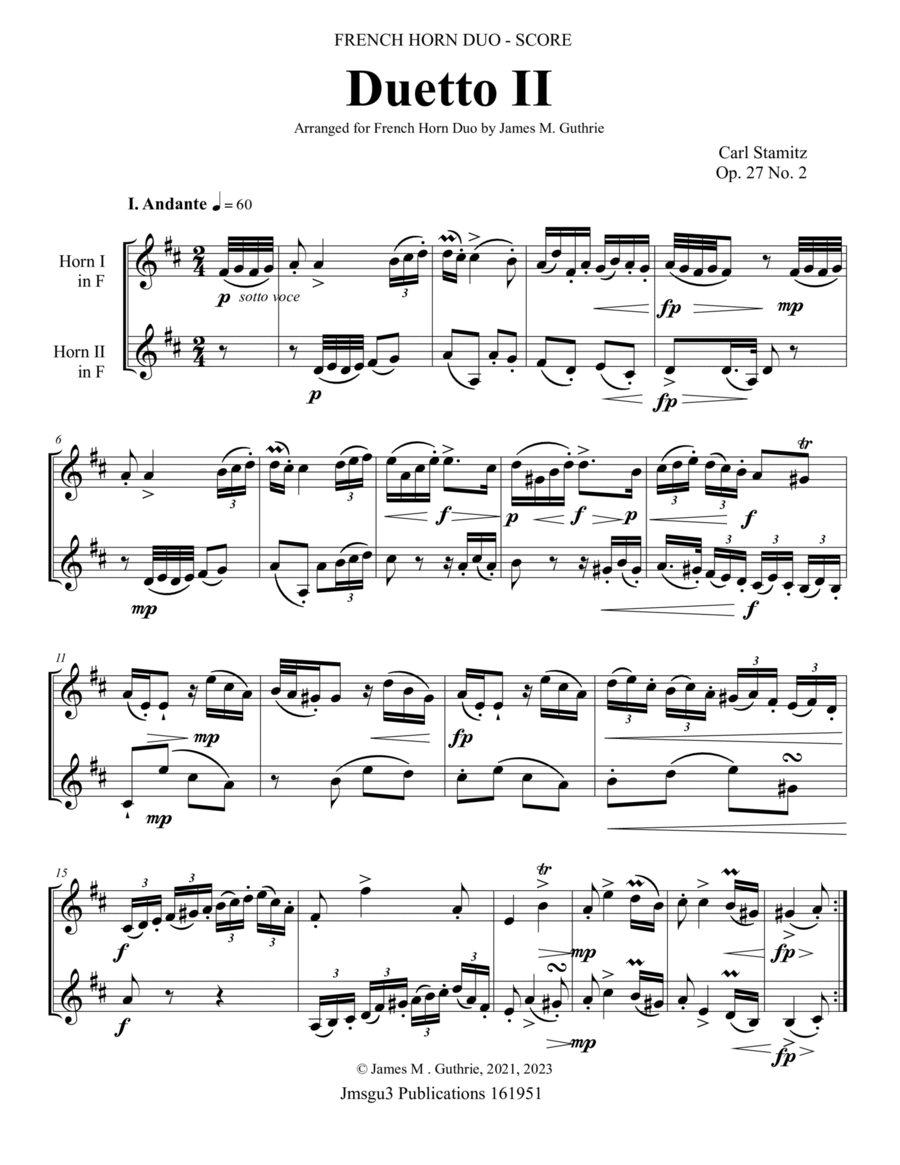French Horn Duet Horn - Level 3 - Digital Download SKU: A0.552253 Composed by Carl Stamitz. Arranged by James M. Guthrie. Classical,Instructional,Standards,Wedding. Score. 14 pages. Jmsgu3 #6306433. Published by jmsgu3 (A0.552253). I. Andante II. Menuetto III. Allegro The significance of Stamitz Duets Op. 27 lies in their contribution to the duet repertoire for two violins (or two flutes). Composed by Carl Stamitz, a prominent figure of this era, the duets were published in 1780. These duets are well-regarded for their musicality and are popular choices for duet performances and educational purposes. They are available in sheet music and have been performed in concerts and recordings, reflecting their enduring appeal and importance in the classical music domain. The duets are known for their melodic and expressive qualities, making them valuable for developing ensemble playing and musical interpretation skills. They are also appreciated for their historical significance in the context of classical music composition and the repertoire for violin or flute duets. Carl Stamitz, born in 1745 and passing away in 1801, was a significant figure in music history, particularly in the classical period. He was one of the most prolific Mannheim orchestral composers, known for writing numerous symphonies, concertos for various instruments, and other instrumental works. Stamitz's influence on the evolution of the Classical sonata form by introducing contrasting themes within a single movement is also noteworthy. He was a prominent representative of the second generation of the Mannheim School, and his contributions to the duet repertoire for two violins or two flutes are highly regarded for their musicality and historical significance. Despite not being as widely recognized as some of his contemporaries, his work has left a lasting impact on the classical music domain.Carl Stamitz significantly contributed to the Mannheim School of Music as the most prominent representative of its second generation. He was the eldest son of Johann Stamitz, a violinist and composer considered the Mannheim School's founder. Carl Stamitz's contribution to the school included his role as a prolific orchestral composer, writing numerous symphonies, concertos for various instruments, and other instrumental works. His work, along with other members of the Mannheim School, helped solidify the Classical symphony and its dynamic contrasts, impacting the evolution of the classical music period. Carl Stamitz's choice of the viola as his favorite instrument and his compositions for the viola also contributed to the school's legacy.
